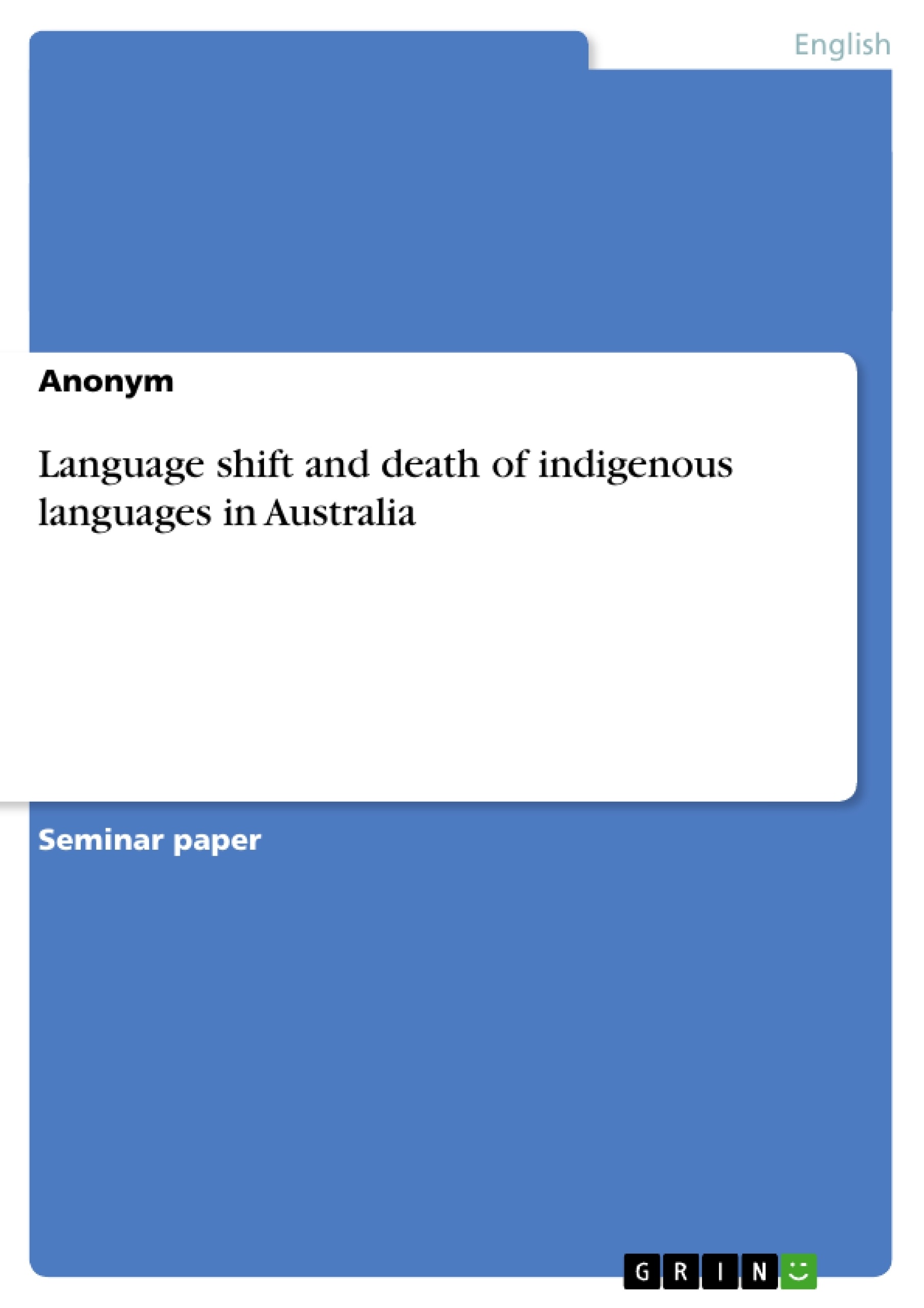As the sailor Captain Cook occupied the Eastern half of Australia in the name of the English King George III in 1770 the foundation for the language contact between English and Aboriginal languages has been laid. This occupation and the spread of British colonisation had a disastrous impact on the indigenous languages of Australia. After the English government had decided to found a penal colony in Botany Bay, Australia, in order to oppose the overcrowding in the British prisons, the First Fleet with 736 prisoners reached Australia on January 26th in 1788.
Up to the arrival of the first British people in 1788 about 300,000 native inhabitants, later called Aborigines, lived in Australia for more than 40,000 years and about 230 distinct languages as well as 500 to 600 dialects were once spoken by the native Australians. The characteristic in Australian languages is that due to the lack in influence from other languages, Aboriginal languages are mostly independent of other language families. After about one century, however, the population of the Aboriginal Australians was reduced to 50,000 people. Moreover, after 200 years of British settlement only 90 indigenous languages were left. Approximately 70 out of these languages were threatened by extinction and only half of them still remained between ten and one hundred speakers.
Inhaltsverzeichnis (Table of Contents)
- Introduction
- Language shift and language death
- The situation of Aboriginal languages during colonisation
- Pointed decimation of Aborigines
- Slavery
- Socialisation and Christianisation through education
- The change in Aboriginal society
- The contemporary situation of Aboriginal languages
- Globalisation
- The Media
- Racism and prejudices
- The situation of Aboriginal languages during colonisation
- Conclusion
Zielsetzung und Themenschwerpunkte (Objectives and Key Themes)
This text aims to analyze the impact of British colonization on the indigenous languages of Australia, focusing on the phenomenon of language shift and death. It explores the historical context, the role of colonial policies in language loss, and the current state of Aboriginal languages in a globalized world.
- The impact of British colonization on Aboriginal languages
- Language shift and death as consequences of colonial policies
- The role of social, economic, and political factors in language loss
- The current status of Aboriginal languages in Australia
- The challenges and opportunities for revitalizing Aboriginal languages
Zusammenfassung der Kapitel (Chapter Summaries)
The introduction lays the foundation for the text by tracing the historical context of language contact between English and Aboriginal languages in Australia. It describes the arrival of the First Fleet in 1788 and its impact on the indigenous population and their languages.
The second chapter delves into the complex relationship between language shift and death and the situation of Aboriginal languages during colonization. It examines the various strategies employed by British colonists to suppress and eliminate indigenous languages, including the systematic decimation of Aboriginal communities, the imposition of slavery, and the forced adoption of English language and culture in education and social settings.
Schlüsselwörter (Keywords)
This text focuses on language shift and death, indigenous languages, Australian history, colonization, British settlement, Aboriginal culture, language policy, and the impact of globalization on language diversity.
- Quote paper
- Anonym (Author), 2004, Language shift and death of indigenous languages in Australia, Munich, GRIN Verlag, https://www.grin.com/document/65168



